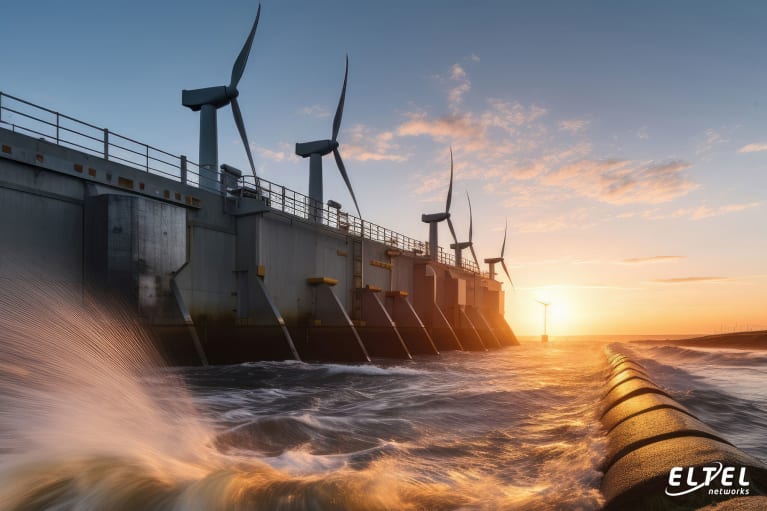
Offshore Energy
The construction of offshore wind farms (Offshore Wind Farms - OWF) in Poland is consistent with the assumptions and goals of the European Union's energy strategy. It is also related to EU executive programs, which include plans for the development of the energy sector, including renewable energy sources (RES). This also refers to the convergence of the assumptions for the development of offshore wind energy, shipping, socio-economic policy goals and the principles of sustainable development maintained in accordance with environmental protection requirements. Are you wondering what the plans are for building an OWF in the Baltic Sea? From the article below you will learn what offshore wind energy in Poland will look like in the near future.
Assumptions of the Polish energy policy in the field of renewable energy sources (RES)
In 2021, the Polish government adopted a resolution on "Poland's Energy Policy until 2040". (PEP 2040). It contains our country's long-term strategy for the development of the energy sector. The plans described in the Act are intended to ensure energy security, increase the competitiveness of the Polish economy and energy efficiency, and limit the impact of the energy sector on the natural environment, while simultaneously using Poland's energy resources.
It should be noted that PEP 2040 indicates the development of offshore wind energy as one of the most important projects for the Polish energy industry. Additionally, it was noted that energy from offshore wind farms is the most predictable source of electricity among all renewable energy technologies. It provides higher power utilization rates compared to onshore wind farms and photovoltaic systems. In addition to the above, as in the case of onshore wind energy, offshore wind energy in Polish waters offers a significant share of domestic suppliers. For this reason, its development may have a positive impact on the Polish economy.
Why is it worth investing in offshore wind energy in Poland?
Offshore wind energy has many advantages over traditional wind farms built on land. The benefits of this type of solutions are:
- High wind speed stability. Wind speed at the sea is more constant, which means that offshore wind farms can operate more efficiently and generate more energy than turbines installed on land.
- No objections from local communities. Offshore wind energy does not cause public objections due to aesthetic and noise concerns, as is the case with onshore wind farms.
- Large areas to develop. The areas to be developed at the sea are much larger than on land. Therefore, the construction of offshore wind farms is not limited by conditions, e.g. spatial development or terrain.
- More power generated. Due to fewer space constraints, larger wind turbines can be installed offshore, generating more clean energy.
- Wind is a renewable resource. Offshore wind farms do not generate additional greenhouse gas emissions like conventional power plants producing energy from fossil fuels.
Disadvantages of offshore wind farms
However, the offshore wind industry is not without its challenges or drawbacks. First of all, attention should be paid to the higher costs of installation, maintenance and the complexity of the supply chain when building an OWF. This is primarily due to the logistical challenges associated with creating the necessary infrastructure at the sea. The second problem may be transporting personnel and large turbine components over long distances. Additionally, offshore turbines must be specially designed to withstand the harsher conditions found in open water, which ultimately leads to a higher price per kilowatt.
We also cannot forget about the possible impact of offshore wind farms on the environment. Offshore wind farms are a new solution and it is still unknown what impact they will have on marine ecosystems or bird migration. Additionally, when designing offshore wind farms, their potential impact on nearby shipping lanes must be analysed.

Offshore power plant
Possibilities of developing wind energy in Poland
Representatives of the energy industry unanimously note that offshore wind energy in Poland will develop rapidly. However, wind farms in our country are to be built in the exclusive economic zone of the Polish Baltic Sea. The first wind turbines are to be put into operation as early as 2026. Currently, there are ten OWF projects with a total capacity of nearly 6 GW at various stages of implementation. For example, in May 2023, the construction of transmission infrastructure for the Baltic Power offshore wind farm began on behalf of the Orlen Group and Northland Power.
It is worth noting that, in accordance with EU state aid rules, the European Commission approved the Polish offshore wind energy support program. The funds obtained in this way will help Poland achieve its renewable energy (RES) targets without unduly distorting competition. The total maximum budget of the program is EUR 22.5 billion and will be implemented until 2030. Ultimately, the Polish support system is to enable the construction of offshore wind farms by 2040, which will generate a total power of up to 11 GW. The assumptions are that Polish wind energy will provide almost 20% of the electricity produced in our country.
